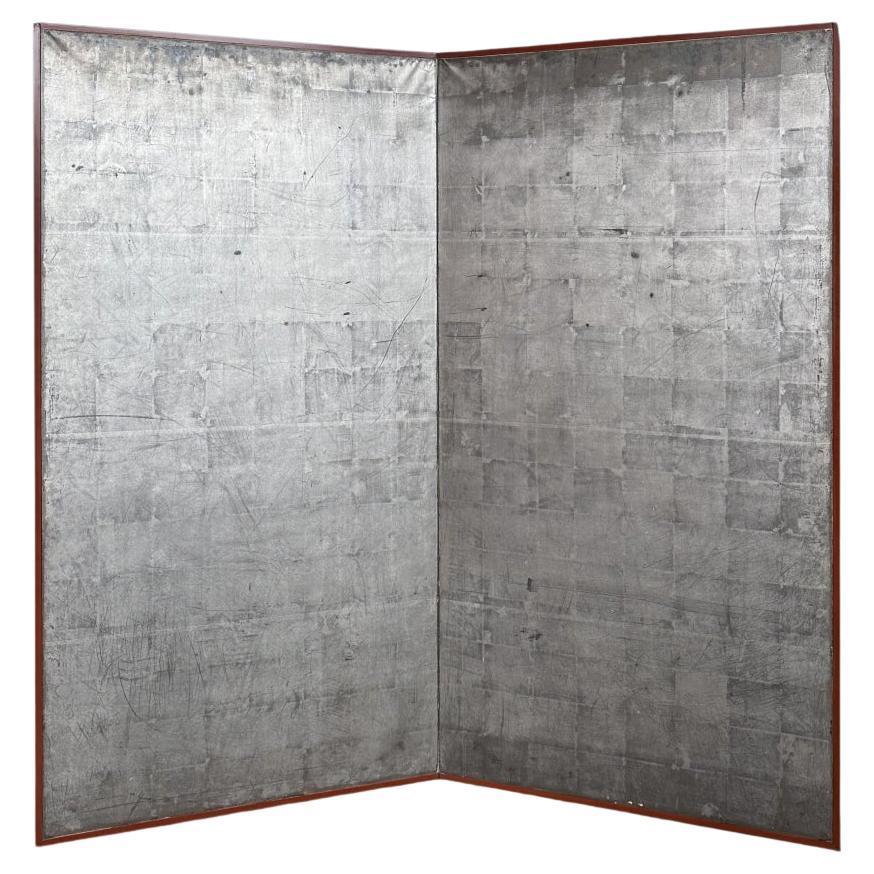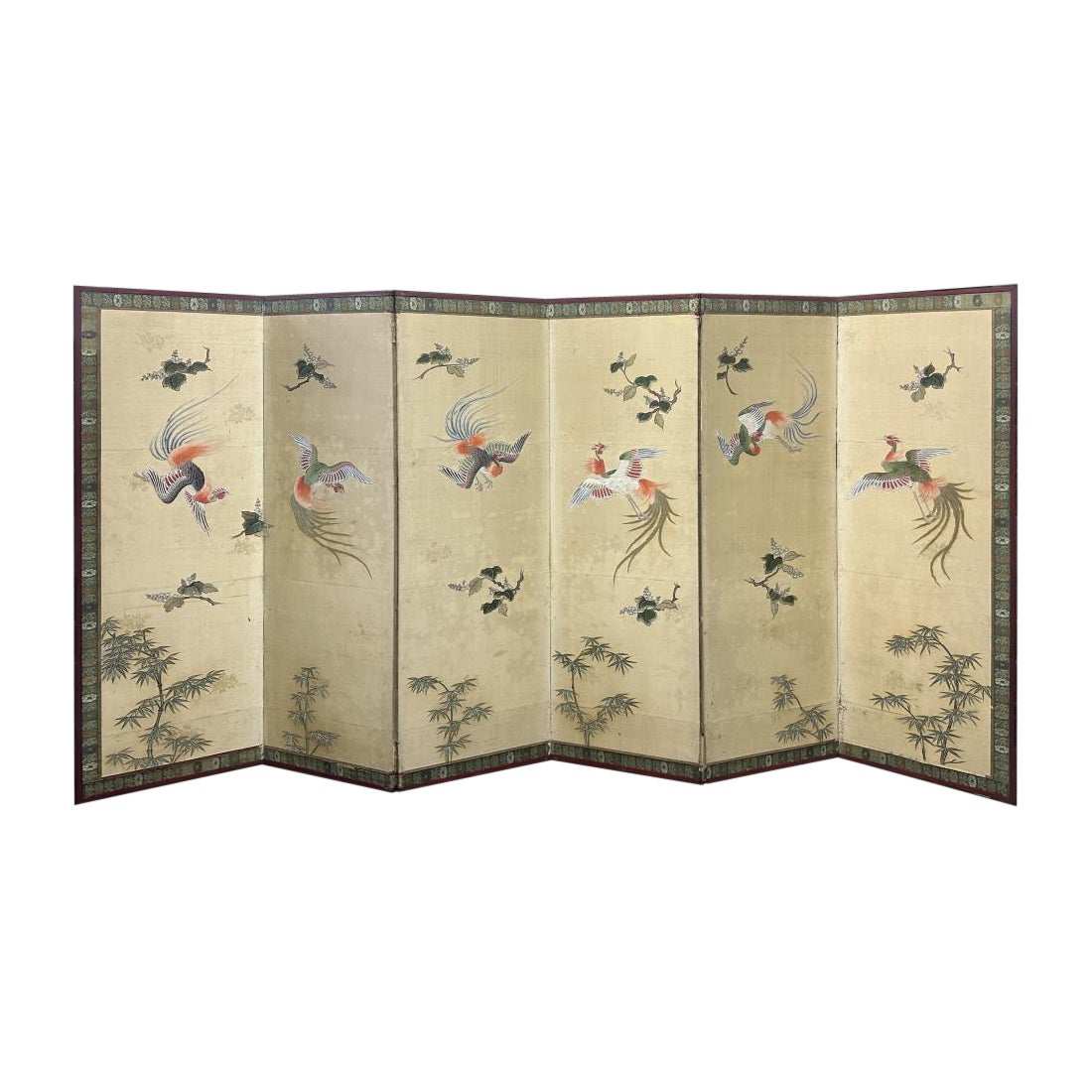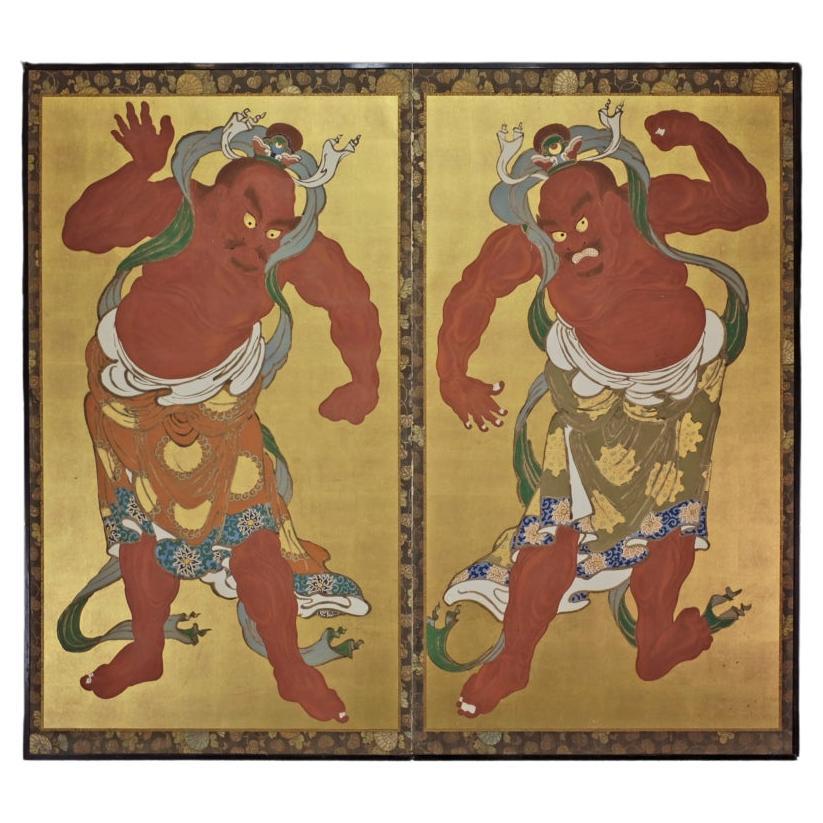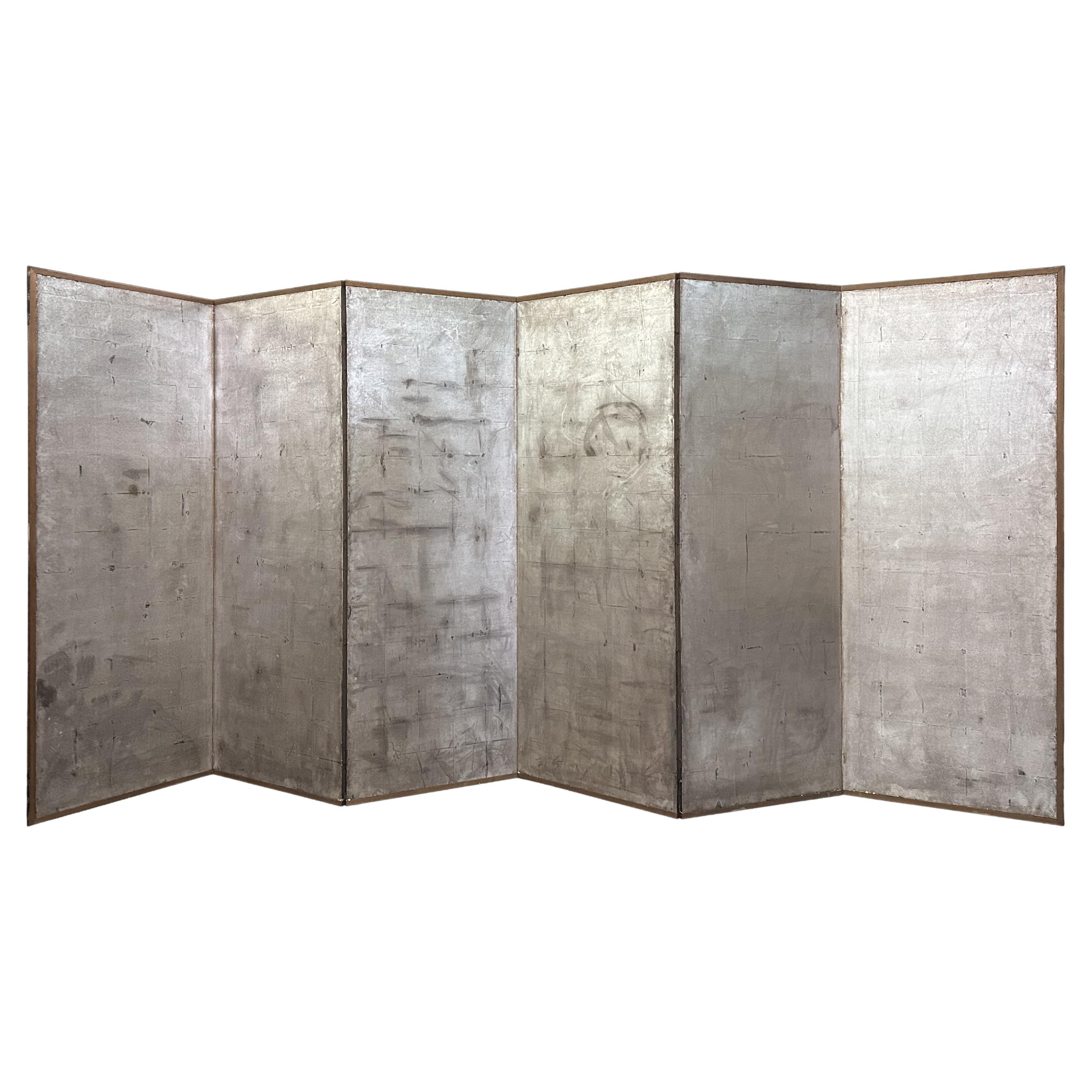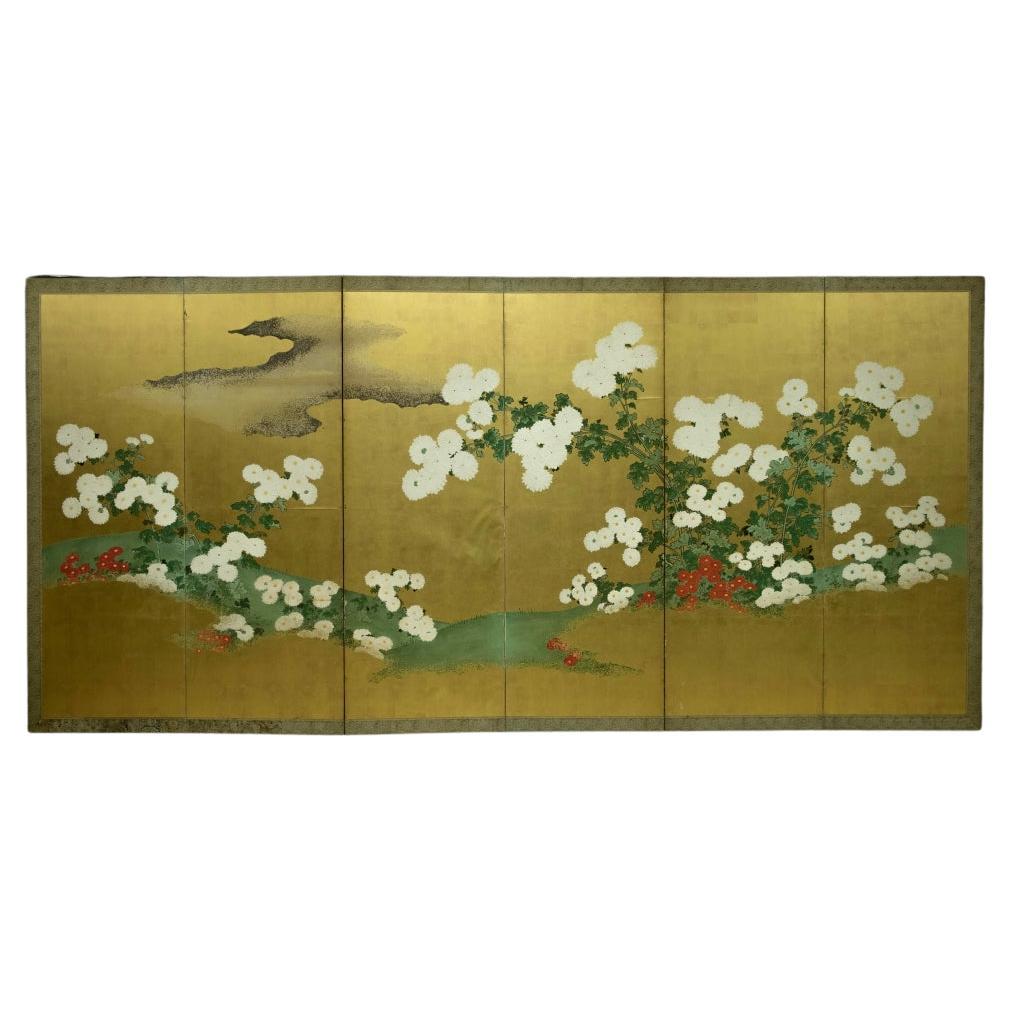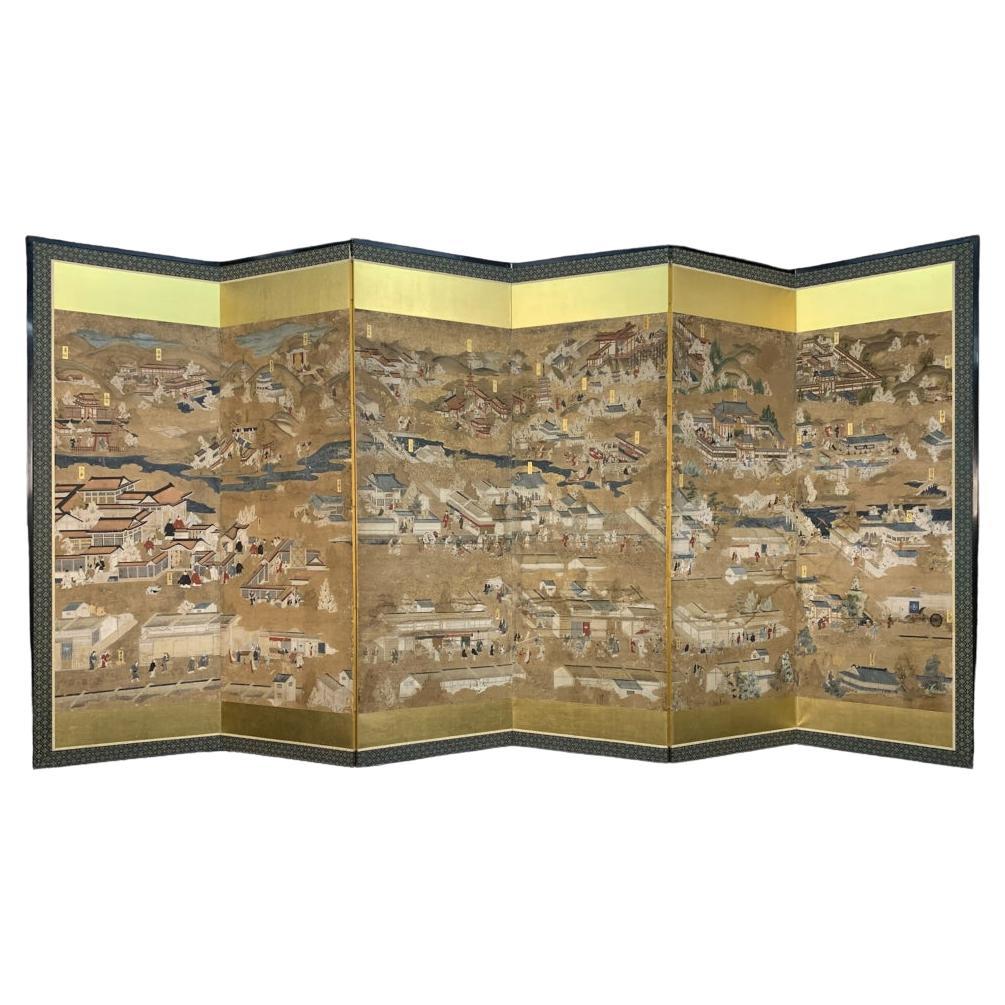Items Similar to Gold Leafed Screen - Late Edo to Meiji Transition
Want more images or videos?
Request additional images or videos from the seller
1 of 5
Gold Leafed Screen - Late Edo to Meiji Transition
About the Item
Gold Leafed Screen - Late Edo to Meiji Transition
Period: Mid-19th century (Late Edo - Meiji)
Size: 384 x 169 cm
SKU: PN32
Hailing from a pivotal era in Japanese history, this gold-leafed screen is a testament to the profound artistry and craftsmanship of the Late Edo to Meiji transition. The Meiji period saw Japan rapidly modernize and integrate Western ideals, while the Edo period was marked by over two centuries of peace and cultural flourishing. This screen captures the rich essence of that transformative period.
Lustrously adorned with real gold leaf, this screen doesn't just echo its time's affluence and aesthetic sensibilities. It radiates a luxurious aura.
Beyond its collectible value, imagine this screen as a backdrop for your cherished display items, accentuating their beauty and lending a touch of historical grandeur. An embodiment of Japanese legacy, this screen is not just a purchase but an investment into a piece of history.
DM us to know more!
- Dimensions:Height: 66.54 in (169 cm)Width: 151.19 in (384 cm)Depth: 0.79 in (2 cm)
- Style:Edo (Of the Period)
- Materials and Techniques:
- Place of Origin:
- Period:
- Date of Manufacture:Unknown
- Condition:
- Seller Location:Fukuoka, JP
- Reference Number:1stDibs: LU8121239097412
About the Seller
5.0
Vetted Seller
These experienced sellers undergo a comprehensive evaluation by our team of in-house experts.
Established in 1998
1stDibs seller since 2023
33 sales on 1stDibs
Typical response time: 6 hours
- ShippingRetrieving quote...Ships From: Tambon Hang Dong, Thailand
- Return PolicyA return for this item may be initiated within 7 days of delivery.
More From This SellerView All
- Late Edo Silver-leafed ScreenLocated in Fukuoka, JPLate Edo Silver-leafed Screen Period: Late Edo to Meiji Size: 186 x 176 cm (73.2 x 69.3 inches) SKU: PL42 Embracing the essence of the Late Edo to Meiji transition, this oxidized s...Category
Antique 19th Century Edo Paintings and Screens
MaterialsSilver Leaf
- Edo-Meiji Phoenix Birds ScreenLocated in Fukuoka, JPEdo-Meiji Phoenix Birds Screen Period: Edo-Meiji Size: 360 x 152 cm (141.73 x 60 inches) SKU: PD16 This gorgeous silk screen from the Edo-Meiji period showcases mythical phoenix bi...Category
Antique 19th Century Japanese Edo Paintings and Screens
MaterialsSilk, Paper
- Late Edo Nio ScreenLocated in Fukuoka, JPLate Edo Nio Screen Period: Late Edo, 19th century Size: 170 x 190 cm (67 x 75 inches) SKU: PTA15 This powerful and extremely rare screen depicts the Nio, Buddhist temple guardians...Category
Antique 19th Century Japanese Edo Paintings and Screens
MaterialsGold Leaf
- Edo Period Japanese Oxidized Silver Leafed Folded ScreenLocated in Fukuoka, JPThis naturally oxidized silver-leafed folded screen is a stunning and unique work of art. The screen was originally evenly colored, but it oxidized over time due to exposure to the e...Category
Antique 19th Century Japanese Paintings and Screens
MaterialsSilver Leaf
- Late Edo Period Rinpa School Chrysanthemum Blossom ScreenBy Rimpa SchoolLocated in Fukuoka, JPLate Edo Period Rinpa School Chrysanthemum Blossom Screen Period: late Edo, early 19th century Size: 364 x 172 cm (143 x 67 inches) SKU: PTA13 This exquisite late Edo period Rinpa ...Category
Antique 18th Century Japanese Edo Paintings and Screens
MaterialsPaper
- Edo Period Kyoto ScreenLocated in Fukuoka, JPEdo Period Kyoto Screen Period: Edo period Size: 343 x 176 cm (134.6 x 69 inches) SKU: RJ69 This stunning Edo period screen depicts typical scenes of d...Category
Antique 18th Century Japanese Edo Paintings and Screens
MaterialsSilk, Wood, Paper
You May Also Like
- Japanese Screen Pair, Tigers by Kishi Renzan, Late Edo PeriodLocated in Kyoto, JPKishi Renzan (1804-1859) Tigers Pair of six-panel Japanese screens. Ink and gold-leaf on paper. In this monochromatic pair of six-fold Japanese screens painted on gold-leaf, Kishi Renzan has created a breathtaking composition of a family of tigers. The screens are filled with a sense of drama which is conveyed by both the subject matter and the wet, expressive brushwork. The running mountain stream and the towering waterfall allude to refreshment during the summer months and we feel the tiger families familiarity and security within their environment. Renzan’s master, Kishi Ganku...Category
Antique Mid-19th Century Asian Edo Paintings and Screens
MaterialsGold Leaf
- Antique hanging scroll of Japanese cat/Late Edo-Meiji period/Cat paintingLocated in Sammu-shi, ChibaThis is a picture of a cat drawn by a person named "Toshizumi Nitta" from the end of the Edo period to the beginning of the Meiji period. She is a very simple and cute cat. He is a vassal of the Tokugawa Shogunate, born in Ota City, Gunma Prefecture (southern part of Gunma Prefecture). He was related to the Tokugawa family and lived in a large mansion in the Ota clan in Gunma prefecture. However, the Nitta family's territory was very small, and they were by no means a wealthy vassal. He seems to have lived quite poorly. So he painted cats and sold them to people. The Nitta family continued to draw pictures of this cat for four generations. "Nitta toshizumi" is equivalent to the fourth generation. During the Edo period, sericulture was thriving in the Kanto region. Cats were said to be the gods of silkworms, as they drive away mice, the natural enemies of silkworms. It was the Nitta family who drew such a cat on paper, pasted it in the silkworm chamber, and sold it as a mouse repellent. There were also other monks who painted pictures of cats, but the Nitta family in particular was related to the Tokugawa family, so people believed that paintings of cats had special powers. , a lot of paintings...Category
Antique Late 19th Century Japanese Edo Paintings
MaterialsPaper
- Japanese Edo Festival Screen, c. 1750Located in Chicago, ILThis 18th century folding screen is a stunning example of Japanese artistry. Beautifully painted with delicate brushwork, the evocative screen depicts a lively festival during the Ed...Category
Antique Mid-18th Century Japanese Edo Paintings and Screens
MaterialsPaper
- Edo Landscape Japanese Folding ScreenBy Japanese StudioLocated in Brescia, ITRefined work by a painter from the first half of the 19th century, from the landscape of the "Rinpa" school by a painter from the end of the 18th century, the Rinpa school. Six panels painted in ink on gold leaf and "gofun" on vegetable paper. The flowers are made with the "gofun" technique, natural or pigmented white oyster powder. Rinpa is one of the major historical schools of Japanese painting. The style was consolidated by the brothers Ogata Korin (1658–1716) and Ogata Kenzan (1663–1743). This folding screen has a very clean design that leaves plenty of room for the beautiful golden landscape. It comes flat and you can easily hang it with our hooks. Lucio Morini...Category
Antique 18th Century Japanese Edo Paintings and Screens
MaterialsGold Leaf
- Japanese Edo Period Two-Panel ScreenLocated in Stamford, CTA Japanese Edo Period two panel folding screen with white and brown hawks of ink and color on paper.Category
Antique Mid-19th Century Japanese Edo Paintings and Screens
MaterialsPaper
- Japanese Two-Panel Screen, Shogun's Journey to EdoLocated in Hudson, NYKano school painting of nobles at rest (some yawning) under moonlit sky. Mostly likely a representation of the last story in the Ise Monogatari: chapter 16, Sekiya (The Gatehouse). A...Category
Antique Mid-19th Century Japanese Paintings and Screens
Recently Viewed
View AllMore Ways To Browse
18th Century Japanese Silk Painting
Old Shunga
Singular Pendant Light
Wood Ding Table
English Upholstered Regency
Walnut Solid Wood Pedestal
Gold And Crystal Candle Holder
Black Leather Suites
Ceiling Light Ice Chandelier
White Saarinen Chairs
Austrian Wiener Werkstaette
Sienna Marble Pair
Set Of 8 Italian Mid Century Dining Chairs
Oak Kitchen Work Table
Calacatta Gold Marble Coffee Table
Kitchen Country Shelf
Vintage Bamboo Plant
Modern 2 Pedestal Dining Table
